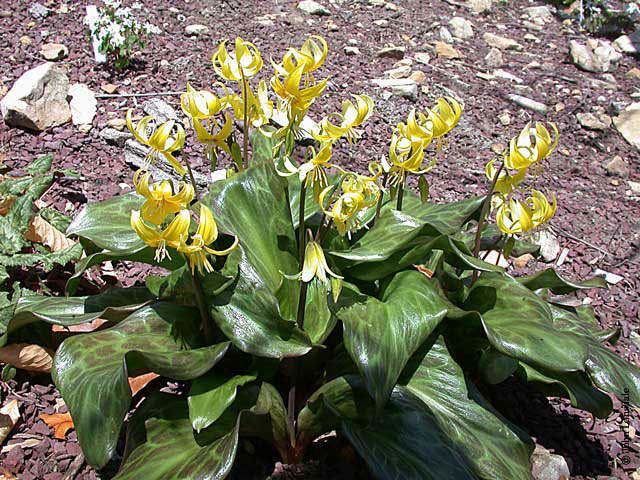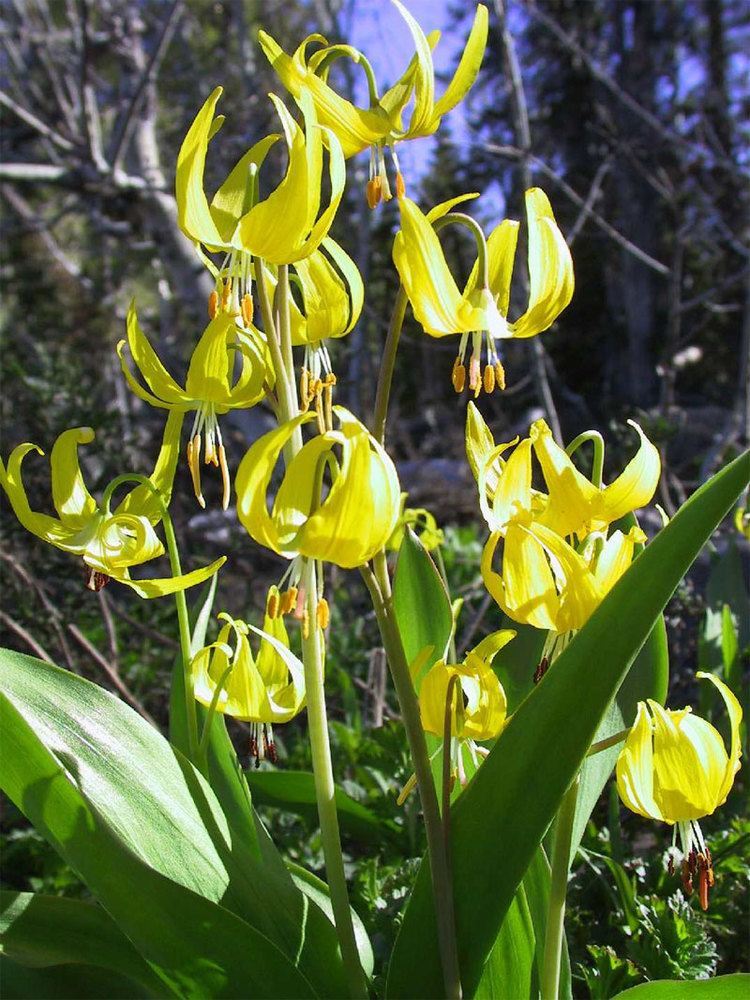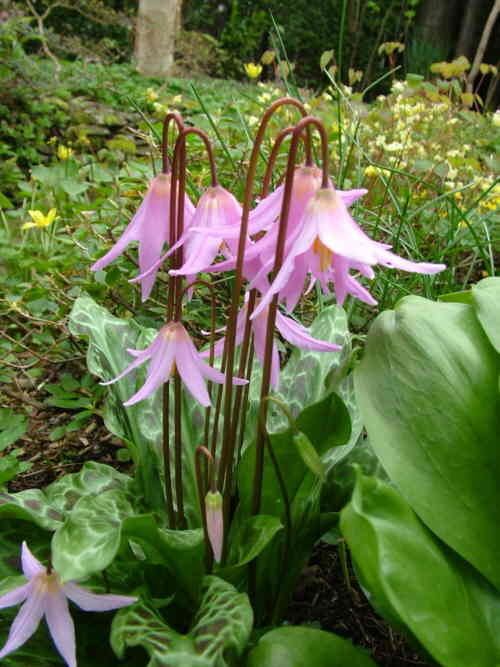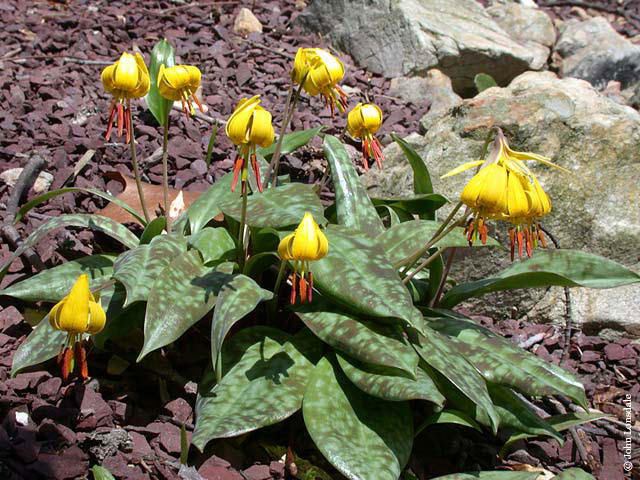Higher classification Liliaceae | Scientific name Erythronium Rank Genus | |
 | ||
Lower classifications Erythronium dens‑canis, Erythronium americanum, Erythronium japonicum, Erythronium grandiflorum, Erythronium revolutum | ||
Keith wiley s erythronium
Erythronium (fawn lily, trout lily, dog's-tooth violet, adder's tongue) is a genus of Eurasian and North American plants in the lily family. The name Erythronium derives from the word erythros, which means red in Greek and refers to the red flowers of E. dens-canis.
Contents
- Keith wiley s erythronium
- Bulb log video diary supplement erythronium in small plunge
- Species
- Formerly included
- Uses
- References

Bulb log video diary supplement erythronium in small plunge
Species

Erythronium includes about 20–30 species of hardy spring-flowering perennial plants with long, tooth-like bulbs. Slender stems carry pendent flowers with recurved tepals in shades of cream, yellow, pink and mauve. Species are native to forests and meadows in temperate regions of the Northern Hemisphere.
Formerly included
Two species names were coined using the name Erythronium but have since been reclassified to other taxa.
Uses

The bulb is edible as a root vegetable, cooked or dried, and can be ground into flour. The leaves can also be cooked as a leaf vegetable. In Japan, Erythronium japonicum is called katakuri, and the bulb is processed to produce starch, which is used for food and other purposes.

They are also widely grown as ornamental plants, with numerous hybrids and cultivars having been selected for garden use. Popular cultivars include Erythronium 'Pagoda', E. 'Sundisc', E. 'Joanna', E. 'Kondo', E. 'Citronella', E. californicum 'White Beauty', and E. 'Rosalind'. Propagation is best by seed in autumn or by division of bulbs, depending on species. Some species propagate vegetatively. The plant is also great as a ground cover, as it will spread over several years.


